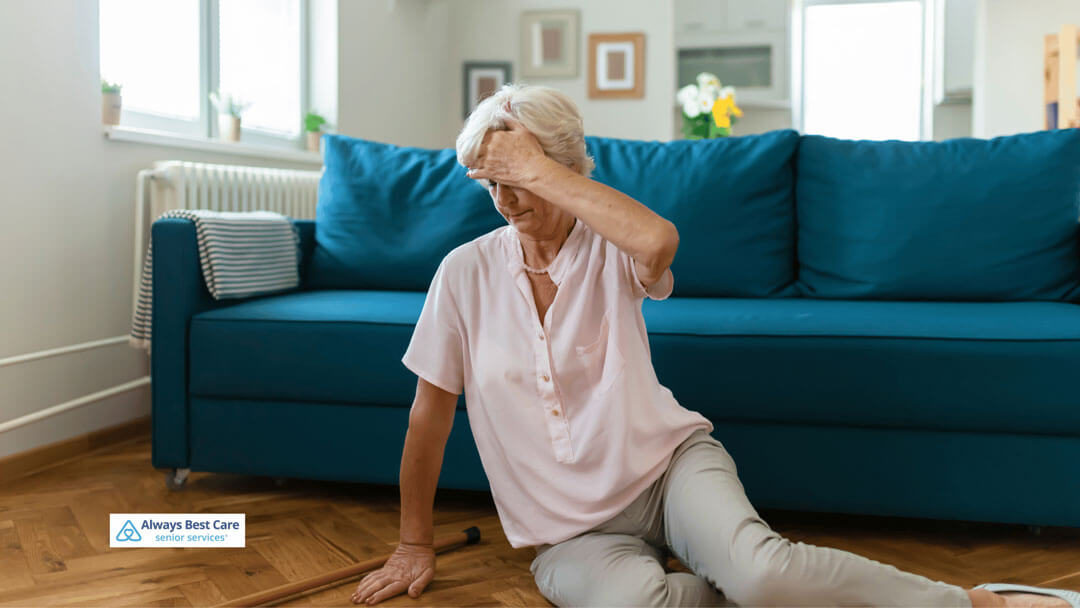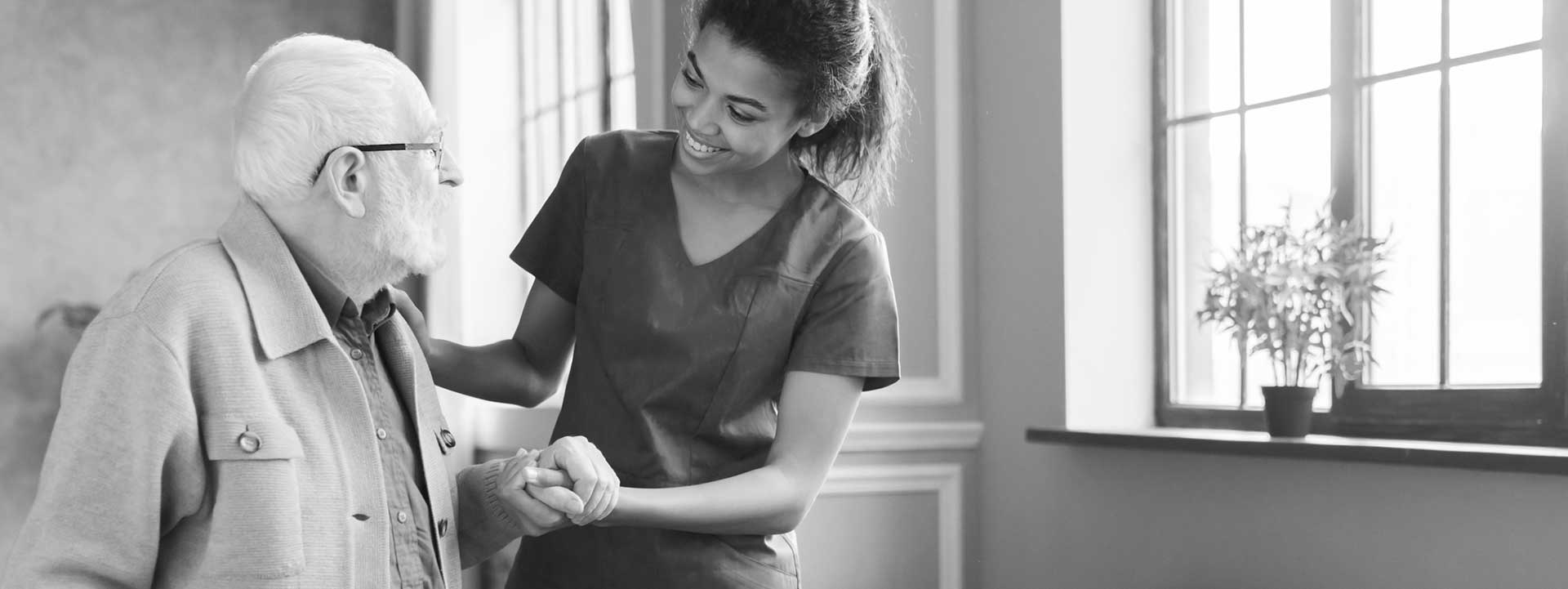9 Commonly Overlooked Fall Risks for Seniors

Falls are a leading cause of injury among seniors, often due to unnoticed hazards at home.
Identifying these hidden dangers is key to creating a safer living environment. These risks can often be resolved with simple adjustments, from poor lighting to unsecured furniture.
Addressing these issues is crucial for preventing accidents and allowing seniors to live independently in their homes.
Table of Contents
What are Fall Hazards?
Fall hazards are any objects, surfaces, or environmental factors that increase the risk of tripping, slipping, or losing balance. These can range from everyday household items like throw rugs or loose cords to external conditions like uneven pavement or icy walkways.
These hazards are particularly dangerous for seniors due to decreased mobility and slower reaction times.
Poor Lighting
Insufficient lighting in high-traffic areas, such as hallways, staircases, and bathrooms, can make it difficult for seniors to see potential obstacles. This increases the risk of missing steps or tripping.
Adding brighter bulbs, installing motion-sensor lights, and using nightlights in darker areas can improve visibility. Consider placing lamps with easy-to-reach switches in rooms seniors frequent, especially near their beds, to ensure they can safely navigate their home at night.
Slippery Floors
Wet floors, spills, and highly polished surfaces can create dangerous conditions for seniors. Bathrooms and kitchens are typical spots where floors may become slippery. Placing non-slip mats in these areas is a simple way to add extra grip.
Encourage the use of non-slip footwear or grip socks to reduce the chance of slipping further. Regularly checking and quickly cleaning up spills can minimize risks and keep the environment safe.
Cluttered Pathways
Clutter in the home can lead to tripping hazards, especially in frequently used pathways. Items like electrical cords, small furniture, or scattered belongings can easily catch a senior’s foot, leading to falls. Keeping these areas clear and organized can make a significant difference.
Rearrange furniture to create more open spaces, store items properly, and remove unnecessary objects from hallways and stairways to ensure seniors can move freely and safely throughout their homes.
Loose Carpets and Rugs
Loose carpets or unsecured rugs are common culprits behind trips and falls. These items can easily bunch up or slide underfoot, causing seniors to lose their balance. Securing rugs with non-slip pads or double-sided tape can help prevent them from moving.
For added safety, consider removing smaller rugs entirely from frequently used areas. Properly maintaining larger carpets and ensuring they are flat and stable will also reduce potential hazards.
Unstable Furniture
Seniors may instinctively reach for nearby furniture when trying to steady themselves. However, unstable or poorly placed furniture can increase fall risk. Ensure that tables, chairs, and shelving units are sturdy and won’t tip over if used for support.
Secure lightweight furniture with wall anchors or rearrange rooms to place heavier items in accessible spots. Keeping furniture stable and within reach provides extra safety for seniors.
Bathroom Hazards
Bathrooms are notorious for fall risks due to wet surfaces and limited space. Installing grab bars beside the toilet and in the shower can provide much-needed support. Non-slip mats on the floor and in the shower or tub add extra grip.
For seniors with mobility challenges, consider adding a shower chair and a handheld showerhead to make bathing safer and more comfortable, reducing the chances of slipping on wet surfaces.
Improper Footwear
Wearing the wrong type of footwear can significantly increase fall risks. Shoes that lack proper support or have slippery soles can cause balance issues.
Encourage seniors to wear shoes with non-slip soles that fit well and provide sufficient support.
Avoid backless slippers, high heels, or any footwear that doesn’t offer a stable grip. Investing in shoes designed for comfort and safety can prevent many avoidable falls and keep seniors secure as they move around.
Unsecured Stairways
Stairs can be particularly hazardous for seniors, especially when railings are loose or missing.
Unsecured or uneven steps pose an additional risk. Installing sturdy handrails on both sides of the staircase can provide extra support, while regular maintenance of the steps ensures they remain even and intact.
Adding brightly colored tape or strips to the edge of each step can also improve visibility and help seniors confidently navigate their staircases.
Outdoor Hazards
Outdoor areas are often overlooked when it comes to fall prevention, but uneven pavements, wet leaves, and icy walkways can all cause dangerous falls.
Regularly clearing pathways of debris and ensuring that surfaces are even can help. In colder months, use salt or sand to reduce ice build-up.
Installing handrails or ramps on steps leading to outdoor areas can provide added safety and make it easier for seniors to enjoy their surroundings without fear of falling.
Additional Tips to Avoid Fall Hazards
Preventing falls goes beyond just fixing obvious hazards.
Encourage regular eye check-ups to ensure seniors can spot potential risks.
Staying active with light exercises can improve balance and muscle strength, reducing the likelihood of falls.
Installing assistive devices like grab bars, railings, and walkers can also make moving around safer.
Regularly reassessing the home environment to identify new risks and making adjustments will help keep seniors safe over time.
How Always Best Care of Greater Milwaukee Can Help
Always Best Care of Greater Milwaukee offers professional in-home care services designed to ensure the safety and well-being of seniors. Our experienced caregivers can perform home safety assessments to identify hidden fall hazards and suggest solutions.
We also assist with daily activities, such as mobility and transfers, reducing the likelihood of accidents. Whether providing part-time help or full-time care, Always Best Care ensures that seniors can age comfortably and safely in their own homes.
Protect Your Loved Ones from Hidden Fall Hazards!
Ensure your senior loved one’s safety by partnering with Always Best Care of Greater Milwaukee. Our dedicated caregivers provide in-home assessments, personalized care plans, and ongoing support to reduce fall risks and keep seniors living comfortably in their own homes. Contact Always Best Care of Greater Milwaukee at (262) 668-8139 to learn more and schedule your free consultation!





